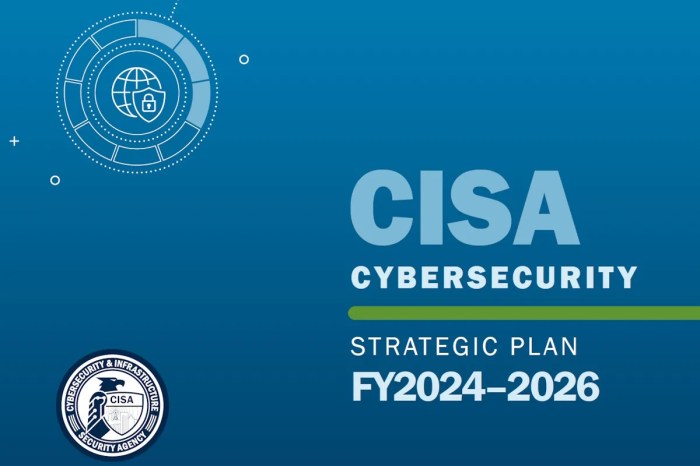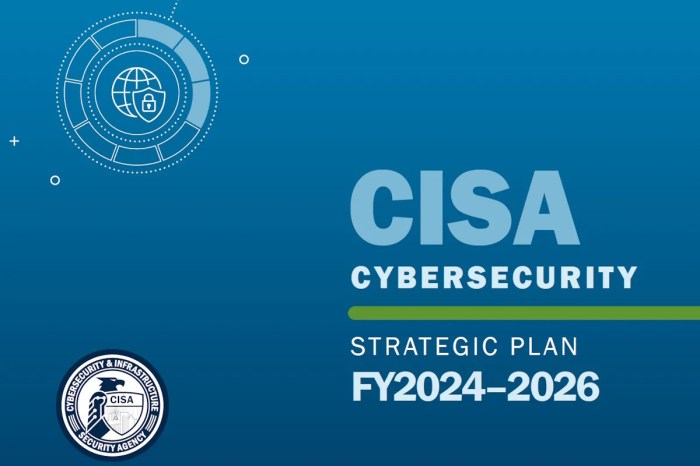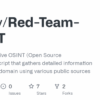SolarWinds hack shows government private sector need to collaborate on security CISA head says. This massive cyberattack highlighted the critical need for stronger partnerships between government and private entities to prevent future breaches. The attack’s sophistication and wide-ranging impact exposed vulnerabilities in both sectors, underscoring the urgent requirement for a coordinated security strategy.
The SolarWinds hack, a sophisticated and targeted attack, used previously unknown methods to infiltrate networks. This demonstrated the evolving nature of cyber threats and the need for continuous adaptation in security protocols. Immediate consequences included widespread data compromise and reputational damage for both government and private sector organizations. The long-term effects included heightened security awareness and a renewed emphasis on vulnerability management.
Introduction to the SolarWinds Hack

The SolarWinds Orion platform supply chain attack, a sophisticated cyber espionage campaign, exposed vulnerabilities in a widely used software. This attack leveraged a meticulously crafted exploit, demonstrating the escalating sophistication of cyber threats and the critical need for robust security measures. The attack’s impact extended far beyond the immediate victims, highlighting the interconnectedness of modern infrastructure and the need for collaboration between government and private sectors.The attackers exploited a vulnerability in the SolarWinds Orion platform, a widely used software for monitoring and managing IT infrastructure.
They inserted malicious code into legitimate software updates, effectively deploying malware to unsuspecting victims. This method of attack, known as a supply chain attack, targets the software supply chain, a critical point of vulnerability in today’s interconnected systems. The significance lies in its stealth and broad reach; once compromised, the attackers gained access to a vast network of victims.
Immediate Consequences of the Breach
The immediate consequences of the breach were severe, impacting a multitude of organizations. The attack’s stealthy nature allowed the attackers to remain undetected for an extended period, causing significant damage before detection. Organizations experienced unauthorized access to sensitive data, including confidential communications, financial records, and intellectual property. This led to disruptions in operations and the potential for financial losses.
Furthermore, the breach eroded trust in the affected organizations and the software supply chain.
Long-Term Effects on Various Sectors
The long-term effects of the SolarWinds hack extended across numerous sectors. The attack exposed the vulnerability of critical infrastructure, such as government agencies and energy providers. This vulnerability underscores the importance of robust cybersecurity practices across all sectors, not just those considered high-priority targets. The attack highlighted the potential for widespread damage caused by a single point of failure in the software supply chain.
The SolarWinds hack really hammered home the point that government and private sectors need to work together on cybersecurity, as the CISA head rightly pointed out. Thinking about how easily vulnerabilities can spread, it’s crucial to look at mobile security too. For instance, Android N’s emergency information on the lock screen ( android n emergency information on lock screen ) highlights how important proactive security measures are, which is a similar need for collaboration between different sectors when it comes to large-scale threats.
Ultimately, the SolarWinds incident serves as a strong reminder that shared responsibility and a united front are key to bolstering security across the board.
The attack also fostered a renewed focus on supply chain security, prompting increased scrutiny of software development processes and the implementation of more stringent security measures.
Affected Entities, Sectors, and Approximate Dates of Breaches
The SolarWinds attack had a significant impact on various entities and sectors. It’s crucial to understand the scope of the affected organizations and the subsequent impact.
| Affected Entities | Sectors | Approximate Dates of Breaches |
|---|---|---|
| Numerous government agencies (U.S. and international) | Government | Late 2020 |
| Multiple private sector companies | Technology, Finance, Energy | Late 2020 |
| Numerous other organizations | Various | Late 2020 |
Government Response and Actions
The SolarWinds hack, a sophisticated and far-reaching cyberattack, exposed significant vulnerabilities in both the private and public sectors. The government’s response, while not without criticism, was a critical element in managing the fallout and mitigating further damage. Understanding the government’s actions provides valuable insight into how nations approach large-scale cyberattacks.The initial response was multifaceted, encompassing both immediate crisis management and long-term strategic planning.
Early steps were crucial in containing the damage and preventing the further spread of malicious code. The subsequent investigation and remediation efforts laid the groundwork for future cybersecurity initiatives.
Initial Government Response
The initial government response was characterized by a combination of immediate containment efforts and a coordinated investigation. Agencies worked swiftly to identify the extent of the compromise, isolate affected systems, and prevent further breaches. Public statements acknowledged the severity of the situation and emphasized the need for collaboration between government and private sectors to address the threat. Early communication was crucial to allay public concerns and maintain trust.
Investigation and Subsequent Actions
The investigation into the SolarWinds hack was a complex and multi-layered process. Authorities examined the nature of the attack, the extent of the compromise, and the motivations behind the perpetrators. This involved analyzing compromised systems, tracing the attack vectors, and identifying the perpetrators. The process of investigation and attribution was rigorous and painstaking, as sophisticated hacking groups often leave few digital traces.
Subsequent actions focused on patching vulnerabilities, strengthening security protocols, and implementing preventative measures to avoid future attacks. These actions demonstrated the government’s commitment to bolstering its cybersecurity posture.
Government’s Approach to Preventing Future Attacks
The government’s response to the SolarWinds hack included a concerted effort to enhance cybersecurity practices and foster collaboration between government agencies and the private sector. This involved developing and implementing stricter security protocols, enhancing threat intelligence sharing, and providing resources and training to organizations. The government recognized the need for proactive measures to anticipate and deter future attacks, which included improving vulnerability detection and patching processes.
Furthermore, there was a push for improved information sharing amongst different agencies and stakeholders, recognizing the importance of collective intelligence in combating advanced threats.
Contrasting Government and Private Sector Responses
| Category | Government Response | Private Sector Response |
|---|---|---|
| Initial Alert | Public statements acknowledging the breach and the severity of the situation. Focus on containing the damage. | Varied responses, ranging from immediate identification and containment to slower reactions. |
| Investigation | Multi-agency involvement in tracing the attack and identifying the source. | Focus on internal investigations, often leading to a more tailored response to the specific company’s exposure. |
| Prevention | Development of new policies, training programs, and security protocols to strengthen national security. | Increased security investments, vulnerability assessments, and security awareness training. |
| Collaboration | Increased collaboration with private sector organizations and international partners to improve threat sharing. | Increased collaboration with other private sector companies and cybersecurity firms. |
The table highlights the different approaches, with the government focusing on national security and the private sector concentrating on business continuity and reputation. Both responses were crucial in the overall effort to address the cyberattack.
Private Sector Response and Actions
The SolarWinds hack exposed significant vulnerabilities in the nation’s cybersecurity landscape, highlighting the critical need for a unified approach between the public and private sectors. While the government’s response was crucial, the private sector’s reaction and subsequent actions were equally vital in mitigating the damage and preventing future attacks. The private sector’s response, however, often differed in approach and speed from the government’s.The private sector’s initial response to the SolarWinds hack was multifaceted, ranging from immediate security audits and incident response planning to broader industry-wide discussions and collaborations.
The SolarWinds hack highlighted a serious security gap between the government and private sectors, and the need for better collaboration, as the CISA head pointed out. This, in turn, makes me wonder about the security of consumer electronics, like phones. For instance, are you feeling safe buying OnePlus phones, considering the recent news? do you feel safe buying oneplus phones Ultimately, this whole situation underscores the importance of robust security measures across all sectors, from government agencies to consumer products.
Many organizations recognized the need to bolster their defenses against sophisticated attacks like the SolarWinds breach, and began to prioritize cybersecurity measures. Companies across various sectors realized that they were not immune to sophisticated attacks and needed to take proactive steps to protect themselves.
Initial Reactions and Assessments
The private sector, unlike the government, often operates with a more immediate and direct approach to risk management, driven by the need to protect their own operations and customer data. Businesses quickly initiated internal investigations to identify any exposure to the SolarWinds compromise, often utilizing threat intelligence and security information and event management (SIEM) systems. The speed of reaction varied across different sectors, with some demonstrating rapid action while others lagged behind.
Cybersecurity Measures and Strategies
Private sector organizations employed various cybersecurity measures to enhance their defenses and limit the risk of similar attacks. These included enhanced endpoint security, improved network segmentation, and rigorous penetration testing protocols. Security awareness training for employees became crucial to prevent social engineering attacks, a common vector in advanced persistent threats. Companies also invested heavily in threat intelligence to stay ahead of emerging threats and to identify and contain vulnerabilities.
The private sector’s response focused heavily on proactive measures, not only to address known vulnerabilities but also to prepare for evolving threat landscapes.
Comparison with Government Approach
The private sector’s approach to cybersecurity often differed from the government’s in its focus on rapid, localized responses. Private companies prioritized the protection of their assets and customer data, which drove their internal assessments and response mechanisms. Government responses, while important, were often slower and more broadly focused on systemic issues, including the coordination of resources across multiple agencies.
The private sector, having a more direct incentive to protect its assets, was more likely to invest in cutting-edge technologies and methodologies for cybersecurity.
Examples of Cybersecurity Measures by Industry
The table below illustrates some of the cybersecurity measures taken by various industries following the SolarWinds hack.
| Industry | Cybersecurity Measures |
|---|---|
| Financial Services | Enhanced multi-factor authentication, improved data encryption, and increased frequency of security audits. |
| Healthcare | Stricter adherence to HIPAA regulations, enhanced access controls, and development of incident response plans for data breaches. |
| Technology | Investment in advanced threat detection systems, proactive vulnerability management, and development of zero-trust security architectures. |
| Government Contractors | Increased scrutiny of supply chain security, strengthened access controls, and mandatory security awareness training. |
Collaboration Between Government and Private Sector
The SolarWinds hack underscored the critical need for enhanced collaboration between the government and the private sector in cybersecurity. The attack exposed vulnerabilities in both sectors and highlighted the limitations of a siloed approach to security. Effective collaboration is no longer a desirable goal, but a necessity for future resilience.The SolarWinds incident demonstrated that sophisticated attacks can exploit vulnerabilities across sectors, requiring a concerted effort to prevent future breaches.
This requires sharing threat intelligence, best practices, and resources. A robust collaborative framework can provide a comprehensive approach to cybersecurity, leveraging the unique strengths of both the public and private sectors.
Crucial Areas for Collaboration
A collaborative approach necessitates a multifaceted strategy, encompassing intelligence sharing, incident response, and joint training. These areas are fundamental to strengthening the collective security posture of both the government and the private sector. Shared intelligence, especially in real-time, is essential to quickly identify and respond to threats.
- Information Sharing: Real-time threat intelligence sharing is crucial. Government agencies possess insights into malicious actors and their tactics, techniques, and procedures (TTPs), which can be invaluable to the private sector. Conversely, the private sector often has access to early warning signals from observed malicious activity and can provide critical information about emerging threats. This two-way exchange is paramount to identifying and mitigating threats swiftly.
- Incident Response: Joint incident response exercises and plans are vital. Government agencies can offer support and resources to the private sector during attacks, while the private sector can contribute their specialized knowledge of specific industries and systems. A collaborative approach can ensure a coordinated and comprehensive response to incidents, minimizing damage and enabling faster recovery.
- Vulnerability Disclosure and Remediation: A collaborative framework should facilitate the responsible disclosure of vulnerabilities. The private sector can report vulnerabilities to government agencies for analysis and remediation, leading to a more secure ecosystem. Government entities can provide guidance on best practices for vulnerability management, improving the overall security posture of both sectors.
Enhanced Collaboration for Preventing Future Attacks
The SolarWinds hack underscores the need for a more proactive and integrated approach to cybersecurity. Enhanced collaboration can help prevent future attacks by fostering a culture of information sharing and joint problem-solving. This requires building trust and establishing clear communication channels between the two sectors.
Benefits of a Strong Collaborative Framework
A strong collaborative framework between the government and the private sector yields significant benefits. It strengthens the overall cybersecurity posture, promotes information sharing, and enhances the resilience of both sectors. It can also accelerate the development and implementation of security best practices, leading to a more secure digital environment.
Table: Potential Areas of Collaboration and Examples, Solarwinds hack shows government private sector need to collaborate on security cisa head says
| Area of Collaboration | Description | Example of Past Collaboration |
|---|---|---|
| Threat Intelligence Sharing | Exchanging information about emerging threats, malicious actors, and their tactics. | The Cybersecurity and Infrastructure Security Agency (CISA) regularly shares threat intelligence with private sector partners, including updates on ransomware campaigns and vulnerabilities. |
| Joint Incident Response | Developing and practicing coordinated responses to cybersecurity incidents. | Government agencies and private sector organizations participate in joint exercises to prepare for and respond to potential cyberattacks. |
| Vulnerability Disclosure | Facilitating the responsible disclosure of vulnerabilities in software and systems. | The National Vulnerability Database (NVD) provides a platform for reporting and tracking software vulnerabilities. |
| Security Awareness Training | Developing and delivering joint training programs to raise awareness of cybersecurity threats. | Collaboration between government and private sector organizations to deliver cybersecurity training programs to employees. |
Security Implications for both Sectors

The SolarWinds hack exposed significant vulnerabilities in both the government and private sectors, highlighting the interconnectedness of their security landscapes. This shared vulnerability underscores the need for a unified approach to cybersecurity, moving beyond siloed strategies. The incident serves as a stark reminder that a breach in one sector can quickly cascade into another, emphasizing the importance of robust, collaborative security measures.The shared vulnerabilities exposed during the SolarWinds attack extend beyond the initial compromise.
The attack demonstrated how seemingly disparate systems and networks can be interconnected and compromised, highlighting the critical need for comprehensive security assessments and proactive threat detection mechanisms. This interconnectedness mandates that both sectors recognize and address their mutual vulnerabilities to prevent future incidents.
Critical Security Implications for Government
Government agencies rely heavily on sensitive data, and breaches can have far-reaching consequences. Compromised systems can leak classified information, disrupt critical services, and erode public trust. The SolarWinds attack underscored the importance of robust security measures to protect national security interests and maintain public confidence. Effective protection against advanced persistent threats is paramount. The incident further highlighted the need for continuous security monitoring and rapid response capabilities.
The SolarWinds hack highlights how crucial collaboration is between government and private sectors for cybersecurity, as the CISA head rightly points out. Interestingly, this parallels the struggles of Fortnite’s performance when installed through the Samsung Galaxy Store, as seen in this article on Tim Sweeney’s comments. Ultimately, both situations underscore the importance of strong security measures across all sectors, from gaming platforms to national infrastructure.
Government agencies must prioritize proactive security measures, including advanced threat detection and incident response planning.
Critical Security Implications for Private Sector
Private sector organizations are equally vulnerable to sophisticated cyberattacks. Breaches can result in financial losses, reputational damage, and disruptions to operations. The SolarWinds attack illustrated how a targeted attack on a seemingly insignificant vendor can have ripple effects throughout the supply chain. The private sector must adopt a more holistic approach to security, encompassing the entire supply chain.
Implementing comprehensive security awareness training programs for employees is crucial to mitigating human error. Robust incident response plans are vital for mitigating the impact of security breaches and restoring services quickly.
Shared Vulnerabilities and Weaknesses
Both government and private sector entities often share vulnerabilities, including inadequate security hygiene, outdated software, and insufficient security awareness training. The SolarWinds attack highlighted the interconnected nature of these vulnerabilities. Supply chain attacks, for instance, can exploit vulnerabilities in software and hardware across both sectors. The need for consistent security protocols and standards across both sectors is critical.
Need for Consistent Security Standards and Protocols
Establishing consistent security standards and protocols across the government and private sectors is essential. These standards should cover areas such as software updates, access controls, and incident response procedures. This unified approach will enhance the overall security posture of both sectors. The need for interoperability and standardization is clear. Joint training exercises and information sharing between government and private sector entities are crucial to improve the overall security posture.
Methods to Enhance Overall Security Posture and Standards
Strengthening security postures requires a multi-faceted approach. This includes investing in advanced threat detection systems, implementing robust security awareness training programs, and enhancing incident response capabilities. Implementing zero-trust security architectures can improve security posture. Regular security audits and penetration testing can help identify and address vulnerabilities.
| Category | Government Sector | Private Sector |
|---|---|---|
| Security Protocols | National Institute of Standards and Technology (NIST) Cybersecurity Framework, FISMA | Industry-specific frameworks (e.g., ISO 27001), NIST Cybersecurity Framework |
| Security Standards | Federal Information Security Management Act (FISMA), specific agency regulations | Industry best practices, compliance requirements (e.g., PCI DSS, HIPAA) |
| Incident Response | National Cybersecurity and Communications Integration Center (NCCIC) support, standardized procedures | Company-specific incident response plans, third-party incident response services |
Recommendations for Enhanced Security
The SolarWinds hack, a significant breach impacting both government and private sectors, underscores the urgent need for enhanced cybersecurity defenses. The attack highlighted vulnerabilities in existing systems and exposed the critical importance of proactive security measures. Addressing these vulnerabilities requires a collaborative approach, fostering information sharing, and implementing robust threat intelligence strategies.The incident exposed gaps in the current security posture, demonstrating that even seemingly impenetrable systems can be compromised.
Moving forward, a multi-faceted approach to security, emphasizing prevention, detection, and response, is crucial for mitigating future threats.
Strengthening Cybersecurity Defenses
A crucial aspect of enhancing security involves implementing robust defenses across various layers of the system. This includes utilizing advanced threat detection tools, implementing multi-factor authentication, and rigorously enforcing access controls. Regular security audits and vulnerability assessments are essential to identify and address potential weaknesses. Patching known vulnerabilities promptly is also a critical component. These preventative measures are fundamental to reducing the attack surface.
Importance of Information Sharing
Effective information sharing between government and private entities is paramount. A shared intelligence platform, allowing for the rapid dissemination of threat information, can significantly reduce the impact of future attacks. This collaborative approach allows for faster identification and response to emerging threats. The private sector possesses valuable insights into emerging threats, while the government holds a broader understanding of national security concerns.
This exchange of knowledge is essential for creating a comprehensive picture of the threat landscape.
Improved Intelligence Gathering and Threat Analysis
Developing sophisticated threat intelligence capabilities is vital for anticipating and responding to evolving attack methods. Advanced analytics and machine learning algorithms can be leveraged to identify patterns and anomalies indicative of potential threats. This approach is crucial in preventing future attacks by anticipating attack vectors and vulnerabilities. Real-world examples demonstrate that early detection and response significantly mitigate the severity of cyberattacks.
Fostering a Proactive Security Culture
Cultivating a proactive security culture within both sectors is essential for long-term resilience. This involves educating employees on cybersecurity best practices, promoting a sense of responsibility, and encouraging reporting of suspicious activities. Training programs focusing on recognizing phishing attempts and understanding security protocols are essential for employee awareness. Empowering employees to report potential vulnerabilities is vital in a proactive security environment.
Specific Actions for Each Sector
- Government Sector: Establish a dedicated cybersecurity task force responsible for coordinating information sharing with the private sector, enhancing threat intelligence capabilities, and developing standardized security protocols. Invest in advanced threat detection tools and regularly conduct vulnerability assessments across all government systems.
- Private Sector: Implement a robust security information and event management (SIEM) system to detect and respond to threats in real-time. Regularly update security software and protocols to address known vulnerabilities. Establish clear communication channels with government agencies to facilitate information sharing and collaboration.
Illustrative Examples of Successful Security Measures
The SolarWinds hack highlighted critical vulnerabilities in both the public and private sectors. Understanding successful security measures implemented before and after this incident is crucial for building more resilient systems. Successful defenses aren’t just about sophisticated technology; they involve a multifaceted approach encompassing people, processes, and technology.Effective security measures aren’t one-size-fits-all. The specific strategies employed depend heavily on the sector, resources available, and the nature of the threat landscape.
Learning from successful implementations, and adapting them to individual contexts, is key to strengthening defenses.
Government Sector Successful Security Measures
Government agencies have historically faced unique security challenges, often involving sensitive data and complex regulatory environments. Effective strategies in this domain often involve a combination of robust technical controls and comprehensive training programs.
- Implementing multi-factor authentication (MFA) across all government systems is a critical proactive measure. The SolarWinds attack demonstrated the vulnerability of relying solely on passwords. This measure drastically reduces the risk of unauthorized access, even if an attacker gains initial access. MFA adds an extra layer of protection, demanding verification beyond a simple username and password.
- Enhancing endpoint detection and response (EDR) capabilities is another significant step. EDR tools monitor and analyze activity on devices, identifying suspicious patterns and behaviors that could indicate an intrusion. Real-time threat detection allows for rapid response, preventing potential breaches from escalating into full-scale compromises.
- Regular security awareness training for employees is essential. Phishing attacks are a prevalent threat vector, often exploiting human vulnerabilities. Regular training helps employees recognize and report suspicious emails and links, minimizing the risk of successful phishing attempts. Security training programs that address various threat vectors and incorporate interactive elements are particularly effective.
Private Sector Successful Security Measures
The private sector often faces a different set of challenges, including the need to balance security with business operations. A successful approach typically involves a proactive risk management framework.
- Implementing a robust security information and event management (SIEM) system helps to identify and respond to security incidents quickly. SIEM systems collect and analyze logs from various security devices, enabling organizations to detect anomalies and potential threats in real time. By automating security monitoring, SIEM significantly reduces the time it takes to detect and respond to attacks.
- Proactive penetration testing is a crucial element of security posture. Penetration tests simulate real-world attacks, helping identify vulnerabilities before they are exploited by malicious actors. These tests can reveal gaps in security controls and provide actionable insights for improvement.
- Investing in a strong incident response plan is paramount. This plan Artikels the steps to take in case of a security incident, ensuring a coordinated and effective response. A well-defined incident response plan helps organizations contain the damage, mitigate further harm, and quickly restore operations.
Security Measures Categorized by Sector
| Sector | Type of Measure | Description |
|---|---|---|
| Government | Multi-factor Authentication (MFA) | Implementing MFA across all systems reduces the risk of unauthorized access. |
| Government | Endpoint Detection and Response (EDR) | Monitoring and analyzing device activity to identify and respond to suspicious activity. |
| Government | Security Awareness Training | Regular training helps employees recognize and report phishing attempts. |
| Private | Security Information and Event Management (SIEM) | Collecting and analyzing logs from security devices to detect and respond to threats. |
| Private | Penetration Testing | Simulating real-world attacks to identify vulnerabilities. |
| Private | Incident Response Plan | Outlining the steps to take in case of a security incident. |
Last Recap: Solarwinds Hack Shows Government Private Sector Need To Collaborate On Security Cisa Head Says
The SolarWinds hack served as a stark reminder that robust cybersecurity requires a united front. The need for collaborative efforts between the government and private sectors is paramount to prevent similar attacks in the future. This collaborative framework must include information sharing, enhanced threat intelligence, and a commitment to consistent security standards. Implementing these strategies will significantly bolster the overall security posture of both sectors.






